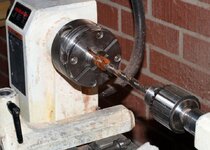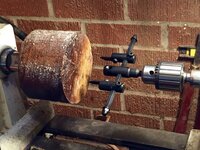keithncsu
Member
Ok so I've already searched and couldn't really find a thread that really hit on my issues. I'll give a quick rundown of my problem and then list out what I'm using. Hopefully you guys can help me figure it out. Long story short I'm getting a lot of vibration when drilling. Especially 27/64. And the drill chuck (PSI keyless MT2) will eventually spin off the Morse taper on the chuck side NOT the quill side. Had it happen in both extending and retracting the quill. I've looked for debris or issues with the MT and see none. Doesn't seem to happen on my 7mm brad point bit. Not sure if there's a chuck issue or if I'm using crappy bits.
Here's my set up:
Rikon 70-105
PSI keyless chuck (paired with the PSI pen jaws when drilling blanks)
My 27/64 bit is the general purpose black oxide ones from Lowe's. Bought one on the way home from work (second one) and it does the same thing.
So am I just doing something wrong or should I just pickup an inexpensive drill press and leave the lathe for turning?
If you need any other info I'll be happy to provide.
Here's my set up:
Rikon 70-105
PSI keyless chuck (paired with the PSI pen jaws when drilling blanks)
My 27/64 bit is the general purpose black oxide ones from Lowe's. Bought one on the way home from work (second one) and it does the same thing.
So am I just doing something wrong or should I just pickup an inexpensive drill press and leave the lathe for turning?
If you need any other info I'll be happy to provide.


